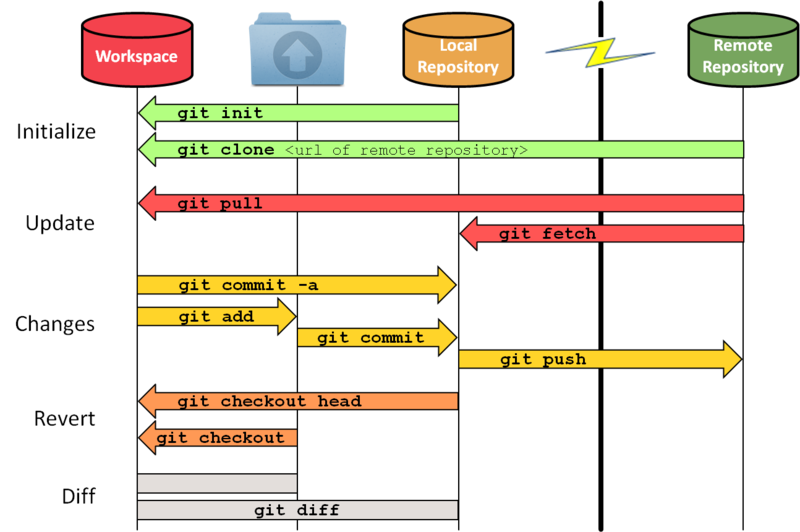Git: Version control system to track changes in your projects.
It is also used to push and pull changes from remote repositories like GitHub, GitLab, BitBucket, etc.
GitLab, GitHub, BitBucket: Services that allow to host your project as a remote repository and serve as repository managers that also have additional features to help SDLC(Software Development Life Cycle) and CI(Continuous Integration), CD(Continuous Deployment).
Workflow

Workspace ↔ Staging ↔ Local Repository ↔ Remote Repository
1. git — version
Display version of git. Also used to check whether git is installed or not.
2. git config
### Set
git config --global user.name "Harsh Singhal"
git config --global user.email "harshsinghal726@gmail.com"
### Check
git config --global user.name
git config --global user.email
3. git init
Convert an existing unversioned project(workspace) to git repository or to create a new empty git repository.
Executing this command creates a .git subdirectory, which contains all the metadata for the new repository. This metadata includes subdirectories for objects, refs, and template files. A HEAD file is also created which points to the currently checked out commit.
#git-commands #gitlab #git #github #commands

2.40 GEEK